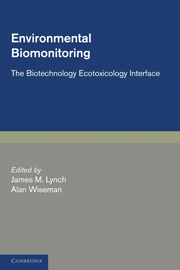Description
Environmental Biomonitoring
The Biotechnology Ecotoxicology Interface
Biotechnology Research Series
Coordinators: Lynch James M., Wiseman Alan
Prefaced by: May Robert
First published in 1998, this broad-ranging volume is concerned with ecologically effective environmental protection and management.
Language: English
Subject for Environmental Biomonitoring:
Publication date: 06-2011
Support: Print on demand
Support: Print on demand
Description
/li>Contents
/li>Comment
/li>
Traditionally the province of chemists, the problem of environmental pollution is increasingly being tackled using methodologies which have a biological basis. This 1998 volume provides a range of examples of how biotechnology can offer sensitive and ecologically relevant new ways of monitoring the presence of biohazards in our environment and, once detected, how these biohazards can be removed in an ecologically safe way through bioremediation. Additional chapters on economic, legislative and policy aspects set the topic in its social context, resulting in a broad-ranging volume of value to all those concerned with the science of ecologically effective environmental protection and management.
Foreword R. May; 1. The value of biomonitors in bioremediation strategies against ecotoxicants J. M. Lynch and A. Wiseman; Part I. Ocotoxicology and Biomonitoring: 2. Our environmental future - the role of science J. Krebs; 3. Pollution and its ecotoxicological consequences J. H. Koeman; 4. Advances in biomonitoring sensitivity and reliability in PAH-contaminated soil A. Wetzel; 5. Microbial parameters for monitoring soil pollution C. E. Pankhurst, S. L. Rogers and V. V. S. R. Gupta; 6. Release of genetically-modified microorganisms and biomonitoring F. A. A. M. De Leij, M. J. Bailey, J. M. Whipps, I. P. Thompson, P. A. Bramwell and J. M. Lynch; 7. Biomonitoring in the aqueous environment: use of cytochromes P450 and other molecular biomarkers in fish and mussels D. R. Livingstone and P. S. Goldfarb; Part II. Ecotoxicology and Bioremediation: 8. Use of non-indigenous organisms for bioremediation - the promise and the concerns R. Colwell; 9. Bioremediation case studies R. M. Atlas; 10. Utilisation of biocatalysts in cellulose waste minimisation J. Woodward and B. R. Evans; 11. Sensors for nitrogen-removal monitoring in waste-water treatment K. Gernaey, H. Bogarert, P. Vanrolleghem, L. Van Vooren and W. Verstraete; 12. Nitrogen fertilizer and ecotoxicology: global distribution of environmental pollution caused by food production; H. Kawashima, K. Okamoto, M. J. Bazin and J. M. Lynch; Part III. Biosafety Regulations and Economics: 13. Risk perception attitudes and defence strategies associated with toxic substances: the case of lead contamination in Hungary Z. Fuzesi, L. Tistyan and A. Vari; 14. Risk economics, risk assessment and legislation: methodology B. Nordenstam; 15. Environmental biomonitoring - legal problems world-wide S. Battersby; 16. Bioremediation - an economic perspective S. Shohet; Part IV. Directional-Pointers to Future Environmental Problems: 17. Development of 'Fail-Safe Strategies' to combat biohazards from environmental xenobiotics A. Wiseman and J. M. Lynch; Index.
This volume provides examples of how biotechnology can offer new ways of monitoring the presence of biohazards in our environment and, once detected, how these biohazards can be removed through bioremediation. Additional chapters on economic, legislative and policy aspects set the topic in its social context, resulting in a broad-ranging volume, of value to all those concerned with environmental protection and management.
© 2024 LAVOISIER S.A.S.




